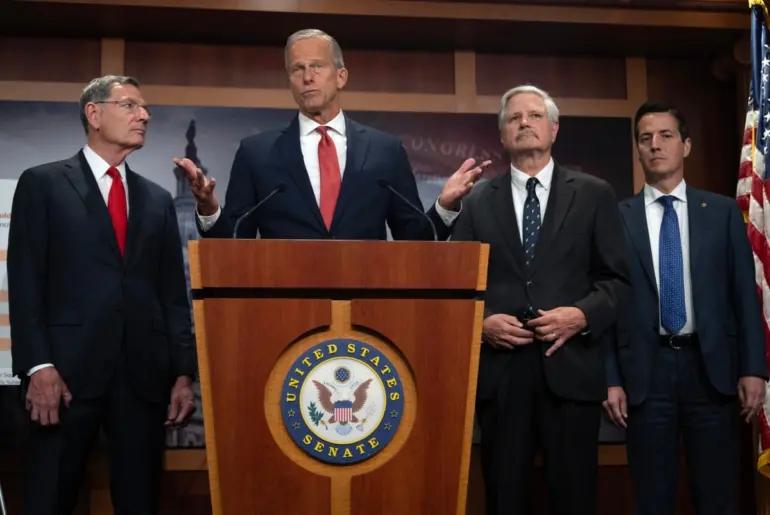The US government officially began shutting down on Wednesday after lawmakers and President Donald Trump failed to resolve a budget impasse centered on Democratic demands for healthcare funding.
Republicans and Democrats immediately blamed each other for the deadlock, which threatens to affect hundreds of thousands of government workers and millions of Americans who rely on federal services.
The shutdown, which will halt operations across numerous federal departments and agencies, comes amid deep partisan divisions in Washington, raising concerns over how long the stoppage will last and its potential impact.
President Trump vowed to punish Democrats and their voters by targeting progressive priorities and imposing mass public sector job cuts during the first government shutdown since his previous term.
“So we’d be laying off a lot of people that are going to be very affected. And they’re Democrats, they’re going to be Democrats,” Trump said during remarks in the Oval Office. He added that “a lot of good can come down from shutdowns,” suggesting he would use the pause to “get rid of a lot of things we didn’t want, and they’d be Democrat things.”
Government operations began winding down at 12:01 a.m. (0401 GMT) on Wednesday following a failed last-minute Senate effort to approve a short-term funding measure that had already passed the House of Representatives.
Senate Majority Leader Chuck Schumer shared a video on social media showing a clock counting down to midnight over an image of the Capitol. “The Republican shutdown has just begun because Republicans wouldn’t protect America’s health care,” he said. “We are going to keep fighting for the American people.”
Essential government services such as the Postal Service, the military, and welfare programs including Social Security and food stamps will continue unaffected. However, up to 750,000 federal workers could be furloughed daily and will not receive pay until the shutdown ends, according to the Congressional Budget Office.
This marks the first shutdown since the 35-day government closure nearly seven years ago during Trump’s previous administration—the longest in US history.
Hopes for a compromise had been fading since a last-ditch White House meeting on Monday failed to produce progress.
Congress frequently faces deadlines to approve spending plans, with negotiations often tense, but usually manages to avoid shutdowns. With Democrats now the minority in both chambers, they sought to leverage their position eight months into Trump’s second term, which has seen significant cuts to government agencies.
Trump’s threat to enact further public sector job cuts has heightened anxieties among federal employees, already shaken by extensive layoffs earlier this year initiated by Elon Musk’s Department of Government Efficiency.
Republican House Speaker Mike Johnson criticized Senate Democrats, posting on X: “How long will Chuck Schumer let this pain go on, for his own selfish reasons? Moms and kids lose WIC nutrition. Veterans lose health care and suicide prevention programs. FEMA faces shortfalls during hurricane season. Soldiers and TSA agents go UNPAID.”
Former Vice President and Democratic presidential candidate Kamala Harris responded on X, emphasizing Republican control: “This is their shutdown.”
The 100-member Senate requires 60 votes to pass government funding bills—seven more than the Republicans currently control.
Republicans had proposed extending current funding through late November while negotiating a longer-term budget deal. Democrats, however, insisted on restoring hundreds of billions of dollars in healthcare funding, particularly for the Affordable Care Act’s insurance programs for low-income households, which the Trump administration aims to dismantle.
Nearly all Senate Democrats voted against the House-approved seven-week stopgap funding bill just hours before the midnight deadline.
The length of the shutdown remains uncertain.
Since 1976, when modern budget processes were enacted, the federal government has shut down 21 times. The longest shutdown began on December 22, 2018, during Trump’s first term, over a $5.7 billion dispute for border wall funding.
AFP


